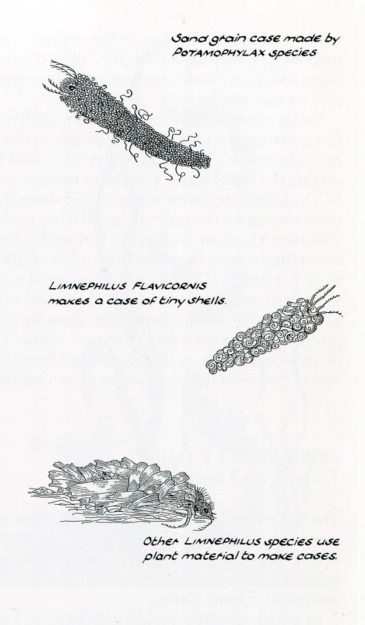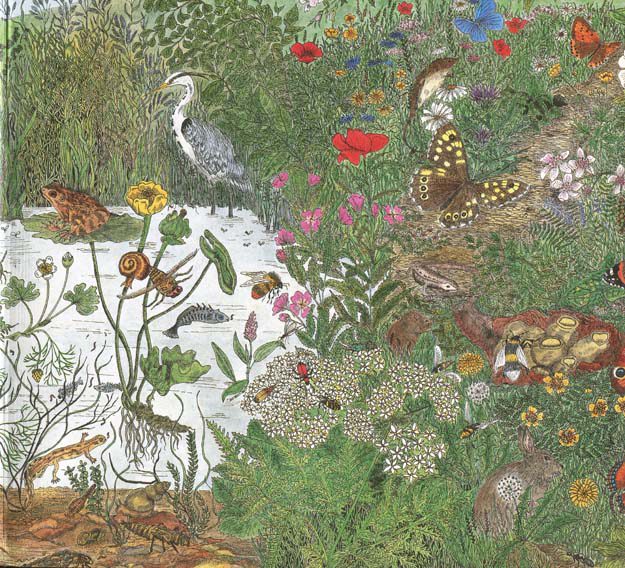Mari Friend, Small Wonder, A New Approach to Understanding Nature, Londres, Blandford, 1991, p. 58-59.

Case constructions ; Caddis flies
Caddis flies flit around waterside vegetation at dusk and they hide by day. They have two pairs of grey-brown wings which are covered with fine hairs ; these wings are held tent-like above the body when the insect it at rest. They spend the greater part of their lives under water in the larval state and they are easily found are recognized in freshwater habitats.
Watching caddis’worms is fascinating. The tube-building species are easy to care for as they feed on algae and fresh or decaying plant material. You can watch the whole life-cycle by starting with the eggs, which are laid on plant stems in a curved mass of jelly.
The larvae are soft and caterpillar-like when they emerge from the errs. Almost as soon as they hatch they begin to spin little tubes about themselves, using silk produced from the salivary glands. The silk tube has to be strengthened ; each species favours different building materials and arranges them in a characteristic way. Bits of vegetation, grains of sand, tiny pebbles, minuscule snail shells or twigs are fastened on to the silken tube. Some arrange the building materials in a spiral ; some are haphazard in their method ; some use two materials, for example sand grains and pieces of small twigs. The favoured material may not be available and so the larvae may have to use whatever they find within their habitat, but the casings built will blend in with the environment and successfully camouflage their owners.
Light materials are usually used in still water, but in moving water, where a little weight acts as an anchor, heavier materials are attached to the silken tube.

The building behaviour pattern is fascinating, and I have found it easy to persuade the caddis worms to make tubes decorated with materials supplied, simply by ensuring they are the only ones available. Coloured beads, non-sharp bits of glass or tiny bits of pottery are possibilities. Of course, these decorative caddis worms have to be cared for until after pupation, as they would very soon be spotted by a predator if they were put back into the wild.
The larva is firmly attached to its case by a pair of hooks situated at the tip of its abdomen. Feathery gills undulate inside the case so that water passes over the body constantly, enabling the larva to extract the oxygen.
The caddis worm in its tube slowly meanders over the vegetation, pulling itself along by its protruding legs and withdrawing completely into the tube when disturbed. The tube has to be enlarged as the larva grows, and when it is fully grown the tube is anchored to a stone or a plant by silken threads and the entrance is fastened with a fine silken membrane ; then pupation begins.